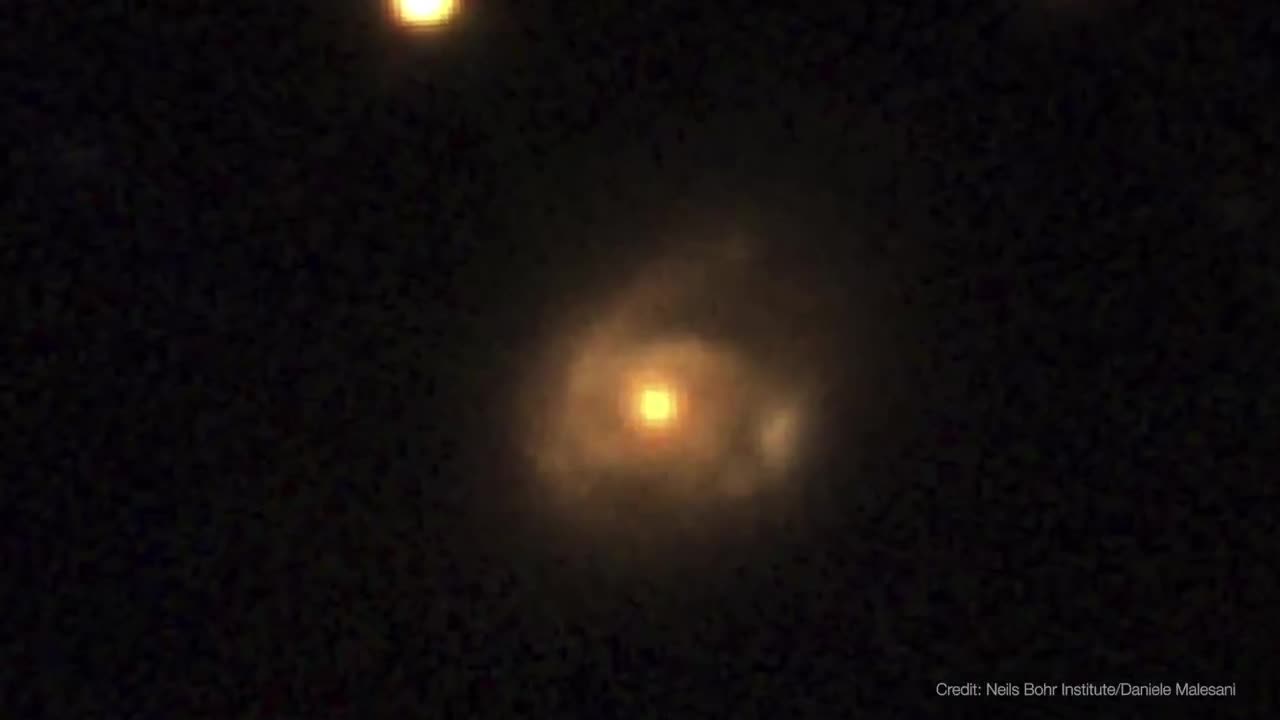Premium Only Content

Black Hole Snack Attack
Using NASA’s Neil Gehrels Swift Observatory, which launched in 2004, scientists have discovered a black hole in a distant galaxy repeatedly nibbling on a Sun-like star. The object heralds a new era of Swift science made possible by a novel method for analyzing data from the satellite’s X-ray Telescope (XRT).
When a star strays too close to a monster black hole, gravitational forces create intense tides that break the star apart into a stream of gas. The leading edge swings around the black hole, and the trailing edge escapes the system. These destructive episodes are called tidal disruption events. Astronomers see them as flares of multiwavelength light created when the debris collides with a disk of material already orbiting the black hole.
Recently, astronomers have been investigating variations on this phenomena, which they call partial or repeating tidal disruptions.
During these events, every time an orbiting star passes close to a black hole, the star bulges outward and sheds material, but survives. The process repeats until the star looses too much gas and finally breaks apart. The characteristics of the individual star and black hole system determine what kind of emission scientists observe, creating a wide array of behaviors to categorize.
On June 22, 2022, XRT captured Swift J0230 for the first time. It lit up in a galaxy around 500 million light-years away in the northern constellation Triangulum. Swift’s XRT has observed nine additional outbursts from the same location roughly every few weeks.
Scientists propose that Swift J0230 is a repeating tidal disruption of a Sun-like star orbiting a black hole with over 200,000 times the Sun’s mass. They estimate the star loses around three Earth masses of material on each pass. This system provides a bridge between other types of suspected repeating disruptions and allowed scientists to model how interactions between different star types and black hole sizes affect what we observe.
Swift J0230’s discovery was possible thanks to a new, automated search of XRT observations called the Swift X-ray Transient Detector.
After the instrument observes a portion of the sky, the data is transmitted to the ground, and the program compares it to previous XRT snapshots of the same spot. If that portion of the X-ray sky has changed, scientists get an alert. In the case of Swift J0230, astronomers were able to rapidly coordinate additional observations of the region.
-
 1:21:53
1:21:53
Man in America
14 hours agoInflation, Debt & War: The 2032 Crash Cycle Is Here—Nations Will FALL w/ Martin Armstrong
39.9K18 -
 1:53:48
1:53:48
Adam Does Movies
13 hours ago $0.83 earnedTalking Movies + Ask Me Anything - LIVE
16.2K2 -
 2:55:43
2:55:43
TimcastIRL
6 hours agoTrump DOJ To Ban Trans People From Owning Guns After Catholic School Shooting | Timcast IRL
172K96 -
 3:21:36
3:21:36
The Quartering
5 hours agoBaldur's Gate 3 First Playthrough!
41.6K6 -
 6:34:42
6:34:42
Rallied
7 hours ago $5.19 earnedWarzone Solo Challenges
70.5K2 -
 57:40
57:40
MattMorseTV
7 hours ago $9.26 earned🔴Trump just SHATTERED the RECORD.🔴
50.1K87 -
 43:39
43:39
WickedVirtue
4 hours agoLate Night Spooky Plays
29.9K2 -
 2:04:02
2:04:02
Glenn Greenwald
7 hours agoTrump and Rubio Apply Panama Regime Change Playbook to Venezuela; Michael Tracey is Kicked-Out of Epstein Press Conference; RFK Senate Hearing | SYSTEM UPDATE #508
106K124 -
 58:36
58:36
Total Horse Channel
9 hours ago2025 CSI3* A Coruña Porsche - Grand Prix
25.7K -
 2:10:32
2:10:32
megimu32
5 hours agoOTS: Mighty Morphin Power Rangers & the 90s Movie That Defined a Generation
23.7K12